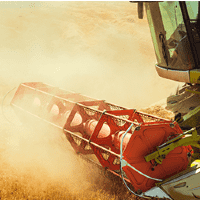Yields
In contrast to the record high yields reported for harvest 2015, average yields fell by around 13%. Reduced average sunshine hours in June and July 2016 contributed to the lower yields. In fact, harvest 2016 yields were just 6% higher than those recorded in harvest 2013 when the UK suffered severe flooding through the wettest December since 1999, which was followed by a cold spring and dry summer.
Crop price
The impact of lower yields on gross margins was offset by an overall 9% rise in average crop prices for the harvest 2016 year compared with 2015. But yields are only one factor affecting crop price.
We are seeing a record global wheat supply with current stocks-to-use ratio at nearly 34% (USDA figures, April 2017). This produced a global drop in commodity prices. It should have signified further decreases in ex-farm prices for UK growers, but political and financial turmoil in 2016 created a weakening of the British pound and offered a cushion against the drop in the global crop price as export demand for UK crop rose.
.jpg)
.jpg)
.jpg)
.jpg)
.jpg)
